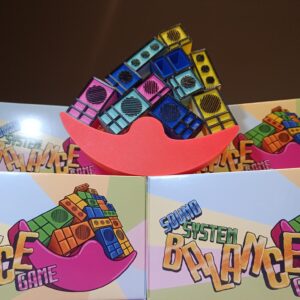Discover the remarkable story of King Jammy and the influential mentor who shaped his legendary career in reggae and dancehall music
In the pantheon of reggae and dancehall legends, few names command as much respect as Lloyd James, better known as King Jammy. His pioneering use of digital rhythms in the 1980s revolutionized the genre, marking a seismic shift in the soundscape of Jamaican music. But behind every great innovator is a source of inspiration, and for King Jammy, that source was the iconic King Tubby. The mentorship between these two titans of dub and reggae not only shaped Jammy’s career but also had a profound impact on the entire genre. This chapter delves into the profound influence of King Tubby on King Jammy, highlighting the key moments and techniques that defined their mentor-mentee relationship.
King Tubby: The Master Innovator
Osbourne Ruddock, universally revered as King Tubby, was a visionary sound engineer and producer whose groundbreaking work in the 1960s and 1970s laid the foundation for what would become dub music. Tubby’s innovative approach transformed the mixing board into an instrument, pioneering techniques such as echo, reverb, and stripping down reggae tracks to their rhythmic core. Tubby’s Dromilly Avenue studio in Kingston became a crucible of innovation, where he deconstructed and reconstructed soundscapes in ways that had never been heard before. His collaborations with producers like Bunny Lee and artists such as Augustus Pablo created a new auditory experience that captivated audiences and influenced countless musicians.
In the early 1970s, a young Lloyd James, known at the time as Prince Jammy, was emerging on the Kingston music scene. Jammy operated his own sound system and was making a name for himself with his technical acumen and innovative mixes. It was during this period that he crossed paths with King Tubby. Recognizing Jammy’s potential, Tubby invited him to work at his studio, an opportunity that marked the beginning of an influential and transformative mentorship.

Learning the Craft: The Tubby Years
Under King Tubby’s guidance, Jammy immersed himself in the art of sound engineering and production. Tubby’s studio was a workshop of auditory alchemy, where traditional reggae tracks were broken down and reassembled into something entirely new. Tubby’s approach was both scientific and artistic; he meticulously manipulated the mixing board to create layers of echo and reverb, giving tracks a haunting, otherworldly quality. For Jammy, working with Tubby was an education in pushing the boundaries of what was sonically possible. He learned to view the mixing board not just as a tool for balancing sound, but as an instrument in its own right.
One of the pivotal techniques Jammy absorbed from Tubby was the art of creating “versions” – instrumental tracks stripped of their vocal lines, often enhanced with added effects. These versions were not mere backing tracks; they were dynamic pieces that stood on their own, offering a new way to experience the rhythm and melody of reggae music. This technique would later become a cornerstone of Jammy’s own productions.
The Birth of Digital Dancehall: Jammy’s Innovation
The influence of Tubby’s mentorship became strikingly evident in the 1980s, when Jammy, having established himself as King Jammy, introduced the world to digital dancehall. In 1985, Jammy produced Wayne Smith’s “(Under Me) Sleng Teng,” a track that would go down in history as the first fully digital rhythm in reggae music. The rhythm was created using a preset on a Casio MT-40 keyboard, a device that Jammy’s team, including Wayne Smith and Noel Davey, had stumbled upon. The result was a sound that was radically different from anything that had come before – crisp, electronic, and irresistibly danceable.
“Sleng Teng” was more than just a hit; it was a revolution. The success of the track marked the dawn of the digital era in reggae, leading to a proliferation of digital rhythms and transforming the sound of dancehall music. Jammy’s embrace of digital technology was a natural extension of the experimental spirit he had cultivated under Tubby’s mentorship. Just as Tubby had deconstructed and reshaped sound with his mixing board, Jammy deconstructed and reshaped the genre itself with digital technology.
Legacy and Influence: The Mentor’s Spirit
The legacy of King Tubby’s influence on King Jammy extends beyond the technical skills and innovative techniques. Tubby’s fearless experimentation and relentless pursuit of new sounds inspired Jammy to continually push the boundaries of what was possible in music. This spirit of innovation is evident in the careers of many artists who worked with King Jammy, including Shabba Ranks, Beenie Man, and Bounty Killer. These artists, and many others, benefitted from the digital revolution that Jammy spearheaded, a revolution rooted in the lessons he learned from Tubby.
The mentor-mentee relationship between King Tubby and King Jammy is a testament to the power of knowledge sharing and the impact of mentorship in the creative process. Tubby’s guidance helped Jammy develop a unique sound that not only defined his career but also transformed an entire genre. Their partnership highlights the importance of mentorship in nurturing talent and fostering innovation in music.
In the annals of reggae history, the story of King Tubby and King Jammy stands out as a powerful example of how the transmission of knowledge and the spirit of innovation can lead to monumental shifts in music. Tubby’s influence on Jammy was profound and enduring, shaping the sound of reggae and dancehall for generations to come.





